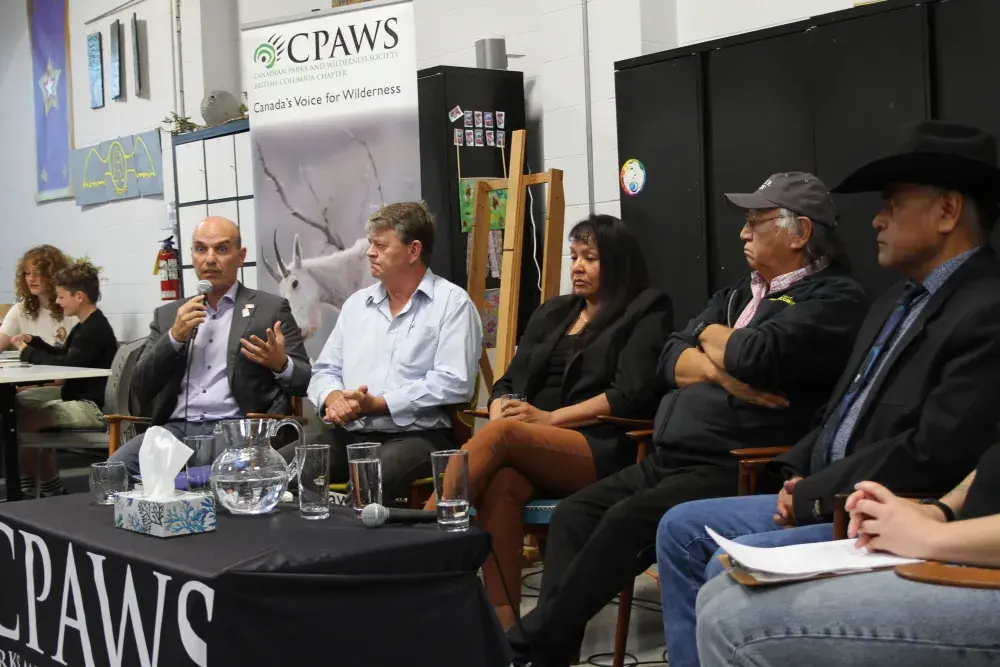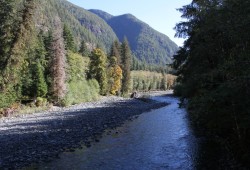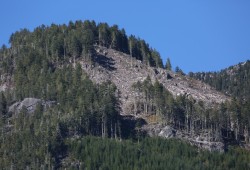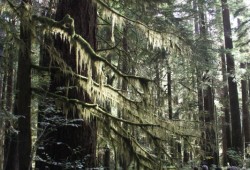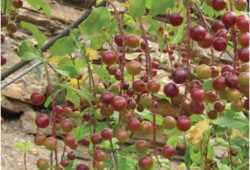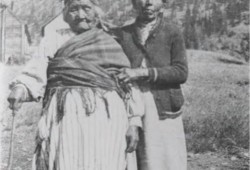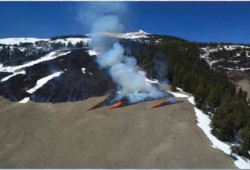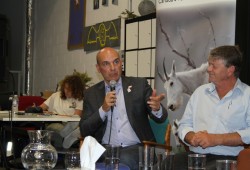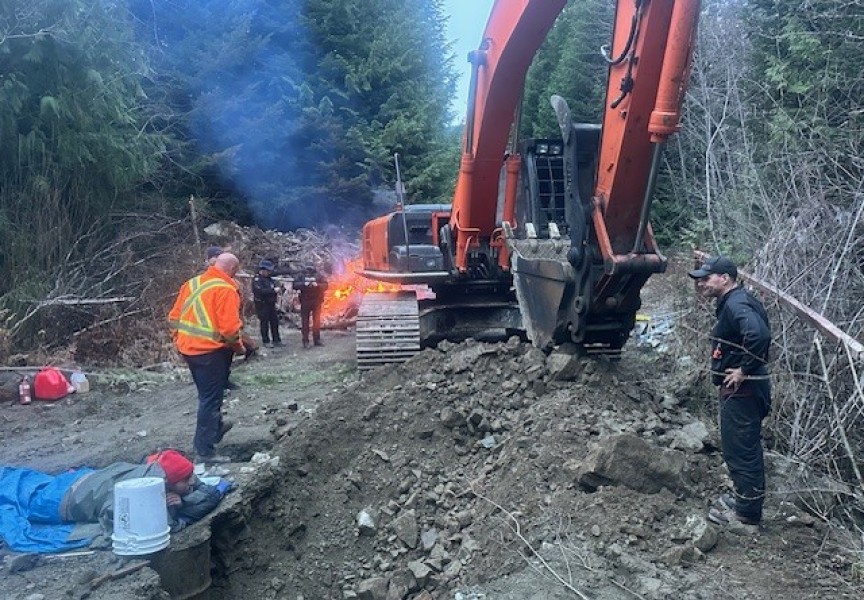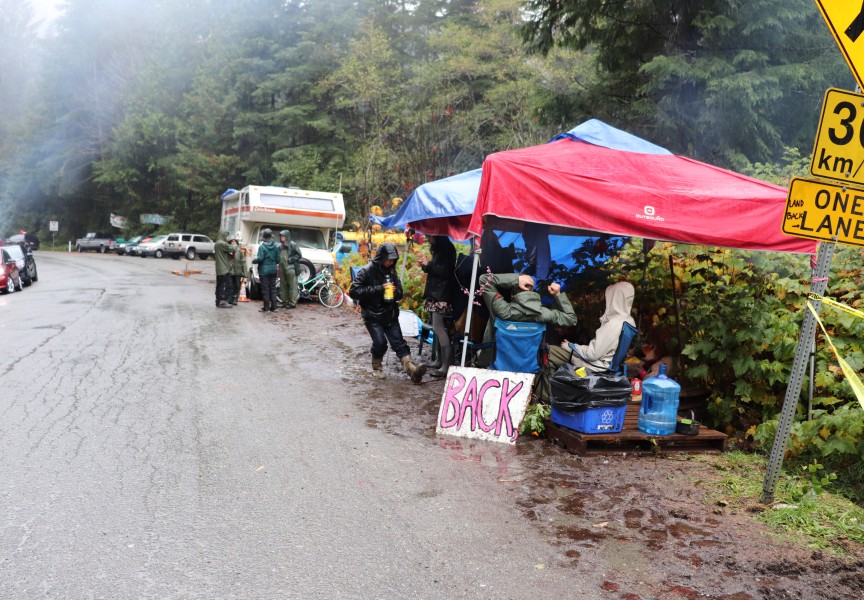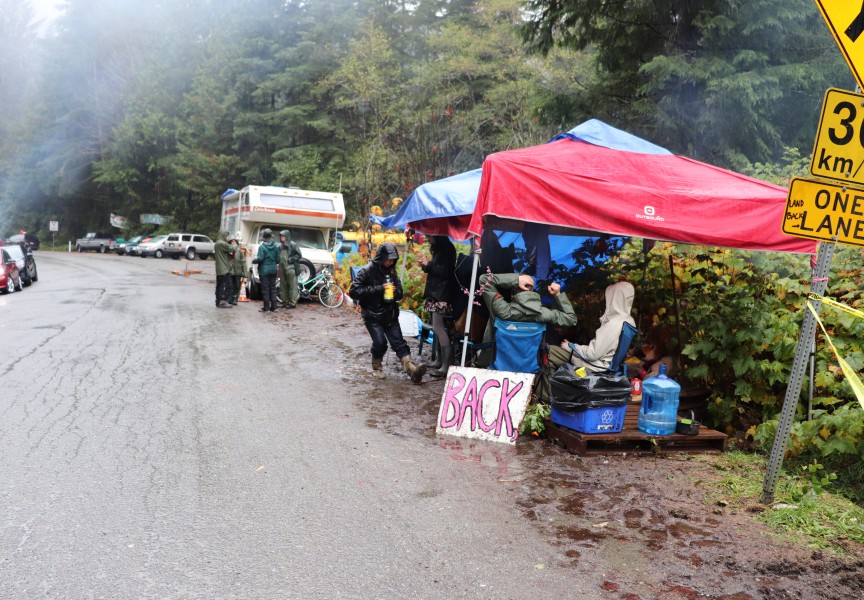As Canada’s goal of protecting 30 per cent of its lands and waters by 2030 approaches, this fall ambitious investments have been announced on the federal and provincial front, with governments saying this will lead to more First Nations-led conservation.
On Nov. 3 a joint announcement came from Ottawa, the province and the First Nations Leadership Council that could result in over $1 billion in support for protected areas over the course of an eight-year agreement between the parties. The Tripartite Framework Agreement on Nature Conservation establishes a fund shouldered equally by the federal and B.C. governments, which “supports a collaborative approach to landscape-based ecosystem health and biodiversity conservation in B.C.,” according to Cecelia Parsons, a spokesperson for Environment and Climate Change Canada.
The agreement aims to align government-supported conservation with the United Nations Declaration on the Rights of Indigenous Peoples.
“The agreement will support Indigenous partners establish Indigenous Protected and Conserved Areas,” stated Parsons.
But she also noted that the feds do not have the jurisdiction to declare IPCAs in British Columbia. This authority falls with the province.
Gaining legal recognition under B.C. law is one of next steps for the Mowachaht/Muchalaht’s Salmon Parks project, a 66,595-hectare area in Nootka Sound to be protected from industrial disturbances that has already been declared under the First Nation’s law. The project has recently benefitted from a $15 million pledge from Environment and Climate Change Canada, federal money to ensure the protection of old-growth forest in most of the Salmon Parks land base.
It's a critical measure to allow the forest to heal after generations of ineffective regulations, said Roger Dunlop, the project’s technical lead and Mowachaht/Muchalaht’s Lands and Natural Resource manager.
“Bank cohesion has been eliminated by logging,” he said during a tour of the Salmon Parks in October. “The regulations across British Columbia are inadequate. They’ve been watered down by the logging industry.”
But in the long term, a provincially recognized protected area will be necessary, stressed Dunlop.
“For salmon parks to be considered by the chief forester, or any other agency for that matter, requires some form of legislated protection,” he said.
'If we take care of nature, it will take care of us'
How the government will legally recognize Indigenous-led conservation remains one of the biggest questions hanging over the province’s environmental pledges. Another key development was announced by the province Oct. 26 to protect old growth forests and critical wildlife habitat. The $300-million Conservation Financing Mechanism is being equally funded by the provincial government and the B.C. Parks Foundation to help establish new protected areas, supporting work like data collection, land planning and monitoring – stewardship work conducted by First Nations’ guardian programs.
The province plans to regroup B.C. into five new Forest Landscape Plans, replacing the past stewardship regions that guided forestry management.
“We are using the best science and data available, and collaborating with First Nations, local communities and industry to create a stronger, more sustainable forest stewardship,” stated Bruce Ralston, B.C.’s forestry minister, in a press release. “New forest landscape plans reflect the generational shift in forestry, where we can depend on a strong and sustainable industry that also safeguards biodiversity and long-term ecosystem health.”
In recent years this generational shift appears to be cutting less old growth, according to the growing area of ancient forest that has been deferred from logging. The provincial government calculates that there are 11.1 million hectares of old growth in B.C., covering 12 per cent of its land mass. Over the last two years, 2.4 million hectares have been deferred from logging, temporarily adding to the 3.8 million hectares that were permanently protected.
The recently announced Conservation Financing Mechanism intends to bolster Indigenous-led conservation, and its fund will be overseen by a special committee, half of its members coming from First Nations organizations.
“First Nations have always believed that if we take care of nature, it will take care of us,” stated Terry Teegee in a press release, who is regional chief of the B.C. Assembly of First Nations and a board member of the BC Parks Foundation. “Many nations are creating Indigenous-protected areas and wildlife corridors as well as looking for ways to have an economy that is in harmony with nature. This funding will help support nations who have a vision of abundance in their territories.”
“Indigenous Protected and Conserved Areas (IPCAs) are anticipated to be an important part of the provincial government’s commitment to protecting and conserving 30 per cent of lands and waters by 2030,” wrote the Ministry of Water, Land and Resource Stewardship in an email to Ha-Shilth-Sa.
Declaration, evictions forced government response
If these words are proven to be true over the remainder of the decade, for the sməlqmíx people of the Similkameen Valley it would represent a remarkable shift in how the government deals with conservation. After years of unsuccessful dealings with the province, on April 28, 2022 the Ashnola Watershed was declared a protected area by the Lower Similkameen Indian Band.
It was a measure that had to be taken, after generations of mining and logging had left the Ashnola River in an “endangered” state, according to the IPCA’s declaration.
“The trend of declining and mismanagement of biocultural diversity, compromised forest health, toxic water contamination and waste in sməlqmíx territory must be addressed and reversed through upholding our ancestral responsibilities,” stated the IPCA declaration, which covers the 197-kilometre Ashnola River that runs near the southern B.C. border with Washington State.
The declaration notes significant impacts on the Ashnola from mining, forestry and forest fires – an increasingly frequent occurrence that the First Nation partly attributes to its inability to practice preventative suppression through traditional burns.
“Ask for forgiveness, not permission, so we declared,” said Lauren Terbasket, the IPCA’s lead negotiator, during a panel discussion in Vancouver on Sept. 21, which was hosted by B.C.’s chapter of the Canadian Parks and Wilderness Society.
She says the sməlqmíx tried for number of years to get the provincial and federal governments to consider protecting the territory, but to no avail.
“We attempted to bring B.C. to the table with letter after letter and phone call after phone call with no response to our chiefs,” she said. “We applied for funds, we were blocked by the B.C. government in accessing those funds because they said they had no IPCA policy.”
Amid the IPCA declaration, the First Nation issued notices to tenure holders to vacate the Ashnola corridor, a measure that created “a lot of uproar” in the mining and forestry industries, said Terbasket.
“After we issued those notices to vacate the province came to the table,” she said, adding that the government did end up providing funds to help the sməlqmíx monitor the land - but the declaration ended up inflaming divisions in the area. “What I don’t like is that causes grief for us, it causes animosity for local communities.”
Looking ahead to 2030, Terbasket believes that a wholehearted recognition of Indigenous protected areas should be a priority for the province. But this would require the government’s acknowledgement of a First Nation’s unceded title to its land.
“The province does not want to acknowledge Indigenous title, partly because they make a lot of money off of these lands,” said Terbasket. “The policy is heavily, extensively, almost totally impacted not by constituents, but by industry. They have the most say almost everywhere in this province.”
Nuchatlaht Councillor Archie Little sat next to Terbasket at the conservation panel discussion in Vancouver. His First Nation on the west coast of Vancouver Island is currently caught up in a court battle with the province to gain Aboriginal title over its territory on northern Nootka Island. Little spent his early childhood in the area currently being contested, where he witnessed a traditional approach to resource management.
“We’ll never, ever see another system like that,” said Little. “Our belief, what we grew up with, that river is a sockeye-bearing river and it’s owned by our chief. Nobody can fish in that river unless they ask the chief if it’s okay.”
“If you’re going to access, you need to be ready to put back what you took,” added Little. “We don’t do that. We clearcut. We manage on wealth, and when that barrel gets a little empty, we start to get concerned about why we have so little.”
B.C. election one year away
So far things have been smoother for the Mowachaht/Muchalaht in their IPCA declaration than what the sməlqmíx encountered in the southern Okanagan. The recently announced $15 million in federal funding will help with the assessment of the protected area, planning, professional services like lawyers and the implementation of monitoring by Mowachaht/Muchalaht guardians. But most of the federal funding will be put into buying out tenures that are currently held by forestry companies.
It's a less confrontational approach than what the Tla-o-qui-aht First Nation faced almost 40 years ago, further south on coastal Vancouver Island. The First Nation declared Meares Island a tribal park in 1984, as its old growth faced clearcutting under tenures held by MacMillan Bloedel and B.C. Forest Products. A blockade was erected to prevent loggers from advancing to Meares Island’s shore, and the fight went to court, where the Tla-o-qui-aht eventually got an injunction preventing logging on the island. Now four tribal parks cover Tla-o-qui-aht territory.
With a provincial election a year away, time is running out for the B.C. government to prove to voters that it’s on pace to reach the 2030 goal of 30 per cent protection. The most recent development came Nov. 15 with the announcement that a framework is being developed by the province to guide how to better protect water, land and forests. The draft Biodiversity and Ecosystem Health Framework speaks of an “urgent need” to change how things are managed – a shift away from prioritizing resource extraction to conserving ecosystem health.
In Vancouver on Sept. 21 Nathan Cullen, B.C.’s minister of Water, Land and Resource Stewardship, came to sit on the panel alongside Roger Dunlop, Archie Little, Lauren Terbasket and Mowachaht/Muchalaht Hereditary Chief Jerry Jack.
“Indigenous-led conservation is my most profound hope in how we build back resiliency, allow the earth of heal itself, how we restore the watersheds that have been damaged from the extraction,” said Cullen.
He noted that the next year will be a “profound era” of conservation, where “the dynamic of who has the authority over the land” will change. He didn’t say anything specific about negotiations concerning the Mowachaht/Muchalaht’s Salmon Parks, but said the province is exploring how to put IPCAs into law.
“We are working on legislation for IPCAs, how do you codify this into law?” pondered Cullen. “But we are working with First Nations people, we’re not doing it alone in our little chamber with lawyers. That takes time, because we will move at the speed of trust.”
This story was made possible in part by an award from the Institute for Journalism and Natural Resources and the Gordon and Betty Moore Foundation.

